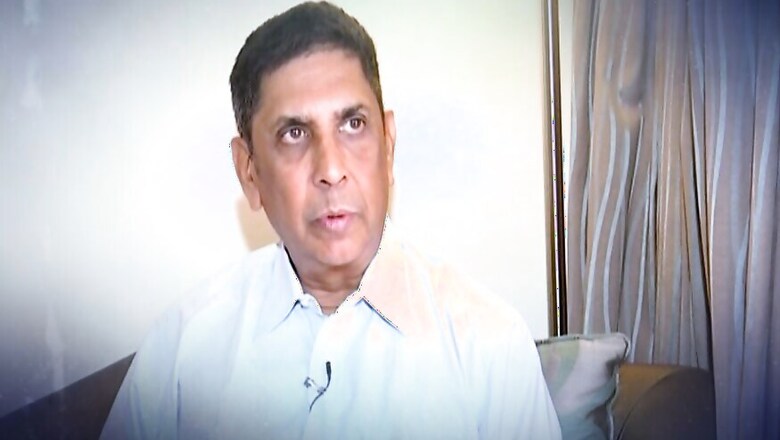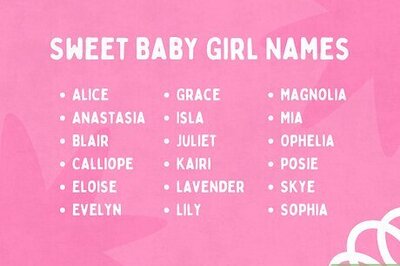
views
Chennai: Sterlite Copper, part of global multinational, Vedanta Group is suffering its longest shutdown since 2013, when it was ordered close operations following a gas leak.
After a smooth five-year sail, the company headed by billionaire Anil Agarwal, witnessed a major setback in May this year when 13 people were killed and scores injured in violent anti-Sterlite protests that rocked the southern city of Tuticorin in Tamil Nadu, fuelling a debate on sustainable industrial development.
In an exclusive interview to CNN-News18, Sterlite CEO P Ramnath says the company should have been given a chance to be heard before the plant was shut down, adding that villagers in Tuticorin were “misled" to participate in protests.
Can you tell us the impact of the sudden closure of Sterlite on the downstream industries?
We have various products like copper, sulphuric acid, phosphoric acid, slag and gypsum. We have several customers who are dependent on us. It (the shutdown) has had an enormous impact. There are copper customers in Coimbatore and these are small customers. Some of them have had to shut down. Some of the bigger ones had to resort to imports and their margins have been hit. If you talk about sulphuric acid, the prices have gone up by 3 to 4 times because of the shutdown as we were the major suppliers of the product in this region. For Southern Petrochemical Industries Corporation (SPIC) Ltd, we were major supplies. They had to start importing sulphuric acid. All this has had a ripple effect and is detrimental in the long run.
At a national level, do you believe the copper demands can be managed from the two remaining local factories after the closure of Sterlite?
Total demand for copper in India is 650,000 tonnes per annum. Although the production capacity is 10 lakh tonnes per anum, we used to export. Now Sterlite is out of the fray and imports have started coming in. This will have a negative effect on the Make in India initiative and will push up the prices of copper. Moreover, copper growth is linked to GDP growth. Since we are looking at 7.8% GDP, copper growth is expected to be 10% per anum. So the demand for copper, too, is going to increase in India.
What are the current monthly costs of Sterlite? How many employees are still left? What do you estimate is their state of mind?
We have around 850-900 employees working at Tuticorin. Though for some period, they were shifted to various locations, they have come back now and we are operating out of Tuticorin. We are also involved in a community outreach programme.
In 2013, you faced a three-month shutdown. Are you confident your factory will resume operations soon?
In 2013 too, it was an allegation… but we still went to the National Green Tribunal. The NGT appointed an independent committee comprising Central Pollution Control Board (CPCB), Tamil Nadu Pollution Control Board (TNPCB) and 2 IIT professors. This committee visited the plant three times, spent four to five days and did an extensive study of all our processes. Only after that did they allow us to operate the plant in their presence for about a week, checked all the parameters and made sure that there was nothing wrong.
The NGT had said that it was not a polluting plant then and won’t be one in future. It was a strong statement based on facts. In the current situation, we are not a polluting company.
In the last 5 years, there have been no complaints from villages, no show-cause notice from the pollution control board. We had our annual shutdown in March. In that period, we found that the situation erupted out of the blue.
We feel that there has been nothing wrong in terms of the various environmental parameters. We have all the pollution control records by the pollution control board itself stating that all parameters are within limits. We feel that we are on strong ground. And we are hopeful that we should be able to get a favourable judgment from the NGT this time. We should see how the law takes its own course.
Do you think the state government should have heard you before issuing a government order?
I would say that there have been no show-cause notices in the last five years. Even this time, there was no show-cause notice in place. We got closure order by the pollution control board and thereafter the closure order by the government itself. Certainly, we feel that we should have been given a chance to put our point of view forward since all the parameters were within the limits.
Sadguru in his interview to CNN-News18 said protests are not the only solution and that investments won't come to Tamil Nadu if there are protests…
Sadhguruji's point of view is valid. Protests are not the way to settle the issues. There are courts to settle them. There are environmental laws. I think whatever happened, should not have happened. We are open to verification to anyone who wants to see our records.
Did you anticipate the violence? Did you seek protection ahead of the May 22 incident?
We anticipated some kind of violence because there was a lot of irresponsible activity on social media which we brought to the attention of authorities, based on which we moved the High Court for protection of our assets. I think, we are well within our rights to ask for protection.So, do you think the state government could have handled the situation before violence broke out? Was it an intelligence failure?
I am sure the state government is the best to comment on that. They would have made assessments.
There are reports that people of Tuticorin still live in fear…
I think people have come forward. Fishermen community and villagers said they were misled by outsiders who stayed in their villages for a few months. They said they were incited into doing so and they never had intentions or knew it would reach this level of violence. They have been forthright and have accepted that they have been misled. They say their livelihoods are at stake. More than 1,50,000 villagers want the factory to reopen.



















Comments
0 comment